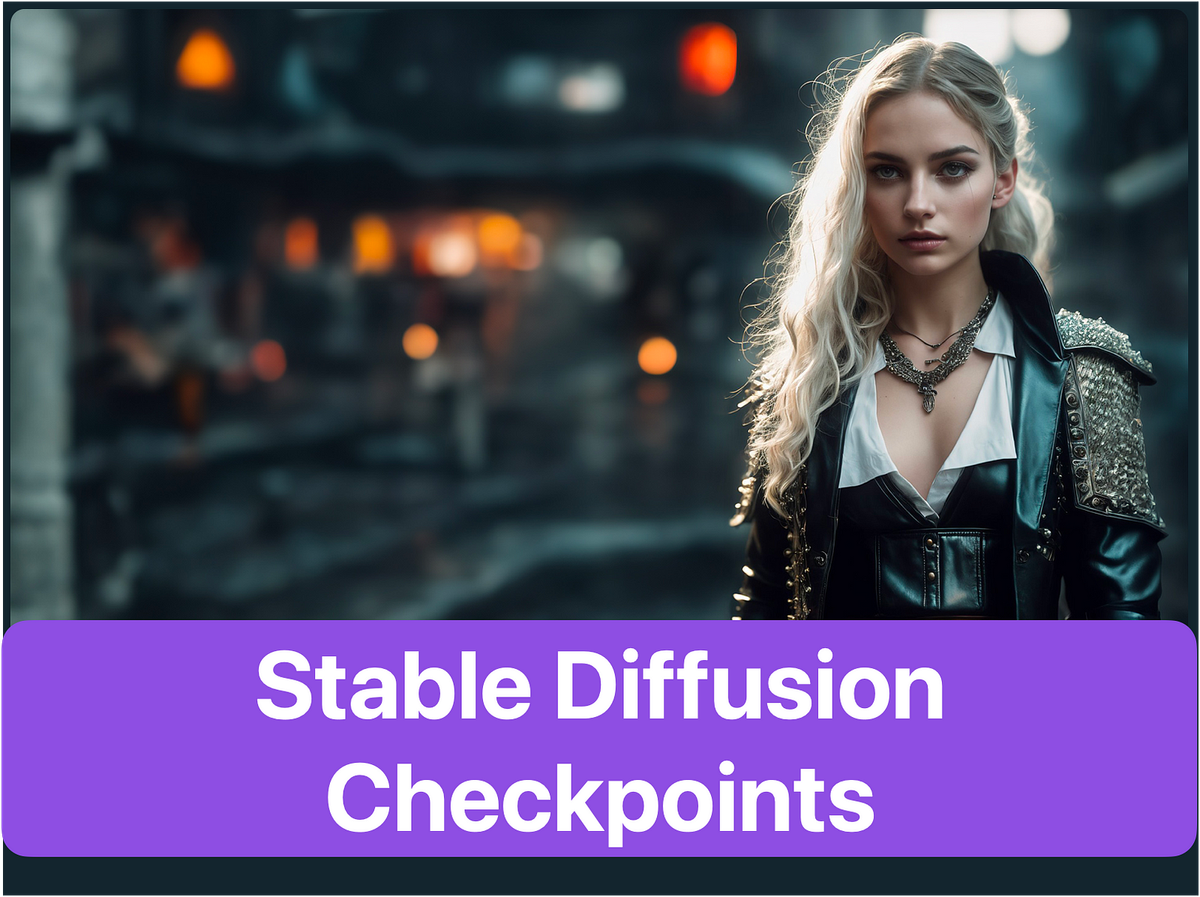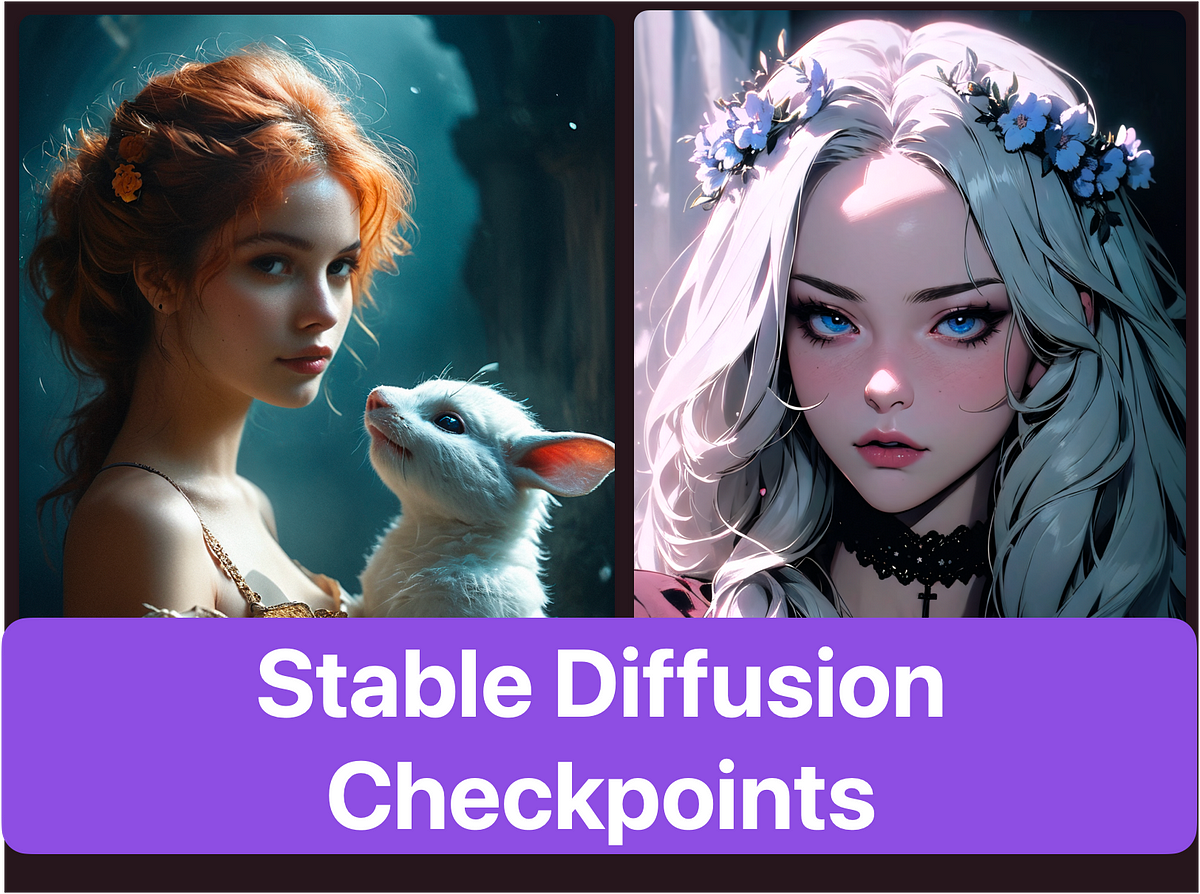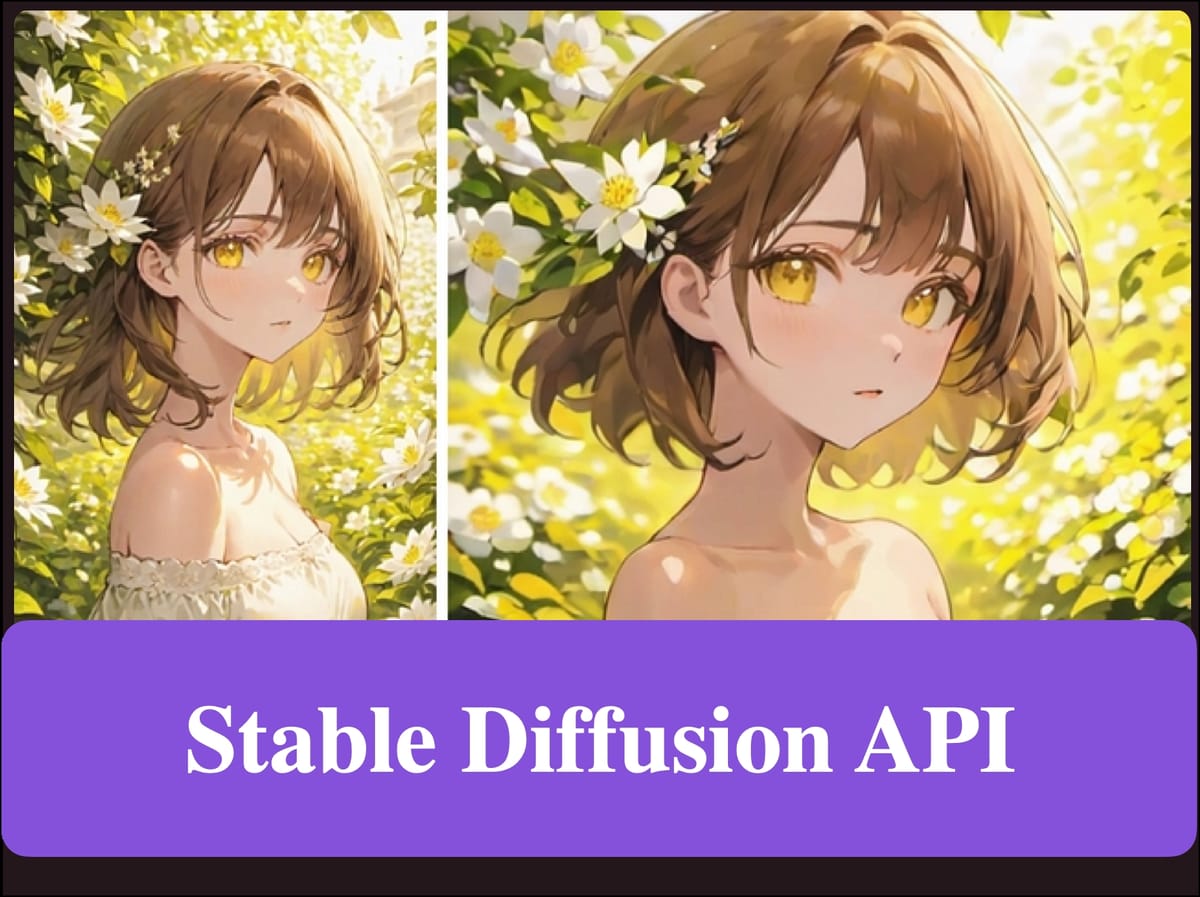Stable Diffusion Models for Anything V3
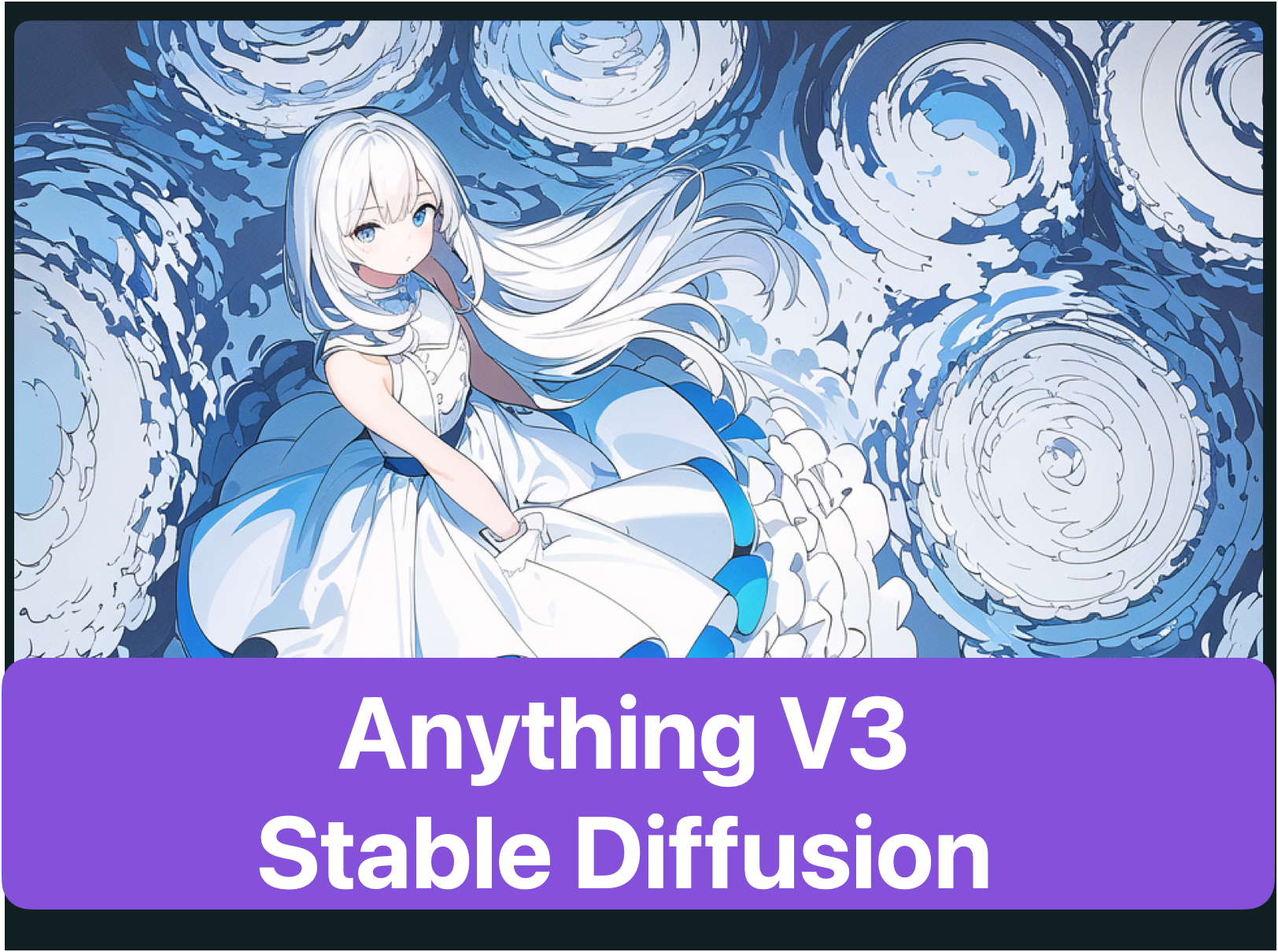
Discover stable diffusion models for Anything V3 in our latest blog. Explore the possibilities and applications of this innovative approach.
With the rapid advancement of artificial intelligence (AI) technology, stable diffusion models have emerged as a powerful tool for image generation. These models, specifically stable diffusion models, are designed to ensure consistency in image synthesis, resulting in normal-quality images that are free from artifacts and other distortions. In this blog, we will delve into the world of stable diffusion models, with a specific focus on Anything V3, its evolution, implementation, and future trends.
Understanding Stable Diffusion Models
To comprehend stable diffusion models, we need to first grasp the concept of stable diffusion. Stable diffusion refers to the process of gradually introducing noise into an initial image to generate a realistic output. It is achieved through the use of diffusion models, which consist of neural networks trained on vast amounts of data. These training data sets provide the models with an understanding of visual patterns, allowing them to generate images with high fidelity and consistency.
The Concept of Stable Diffusion Models
Stable Diffusion is a generative AI model that was initially introduced in 2022. It specializes in producing distinctive photorealistic images based on text and image prompts. In addition to images, this model can also generate videos and animations, expanding its creative capabilities beyond static visuals.
The emphasis on stable diffusion allows users to manipulate images in a controlled manner, ensuring that the resulting images accurately reflect the user’s intentions.
the architecture of stable diffusion (source)
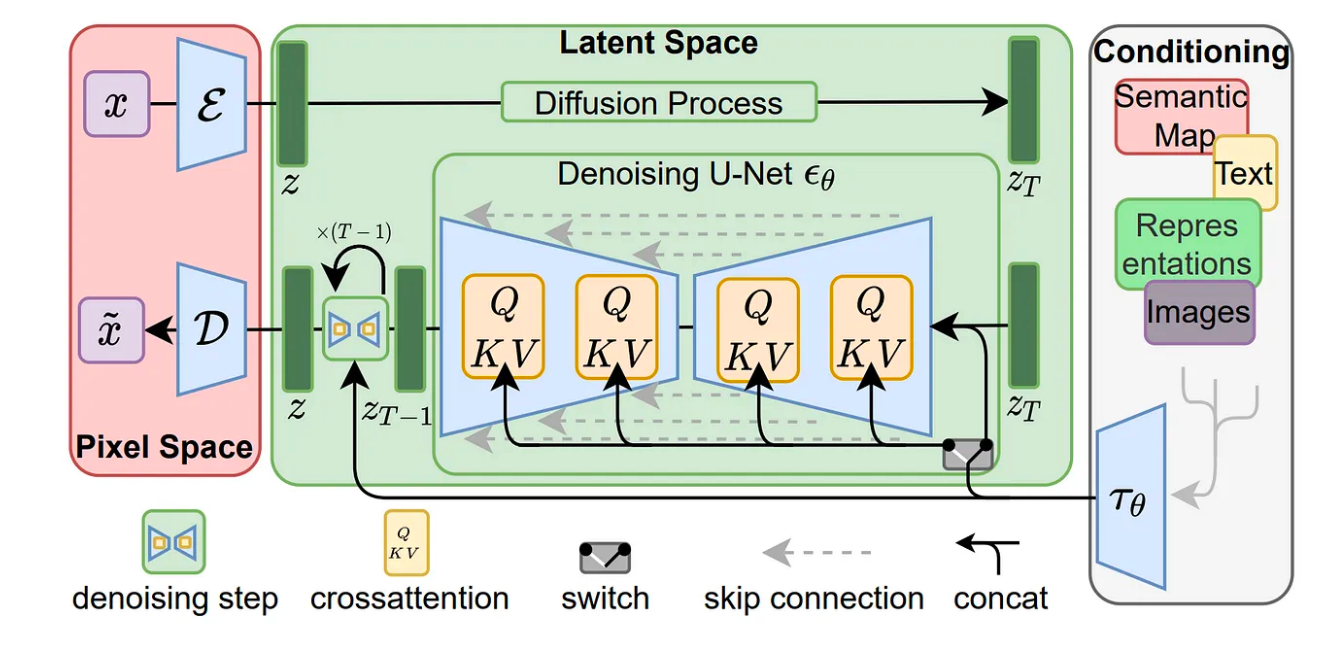
Now, introducing Stable Diffusion 3, a powerful text-to-image model with improved performance in multi-subject prompts, image quality, and spelling accuracy.
Stable Diffusion 3 Core feature
1. Adopt new diffusion transformation architecture to improve performance
2. Introduce new diffusion transform technology to enhance image generation capability
3. Integrated stream matching technology to improve image quality and diversity
While not widely available yet, we are opening a waitlist for an early preview. This phase will help gather insights to enhance performance and safety before a broader release. Sign up here to join Stable Diffusion 3 waitlist.
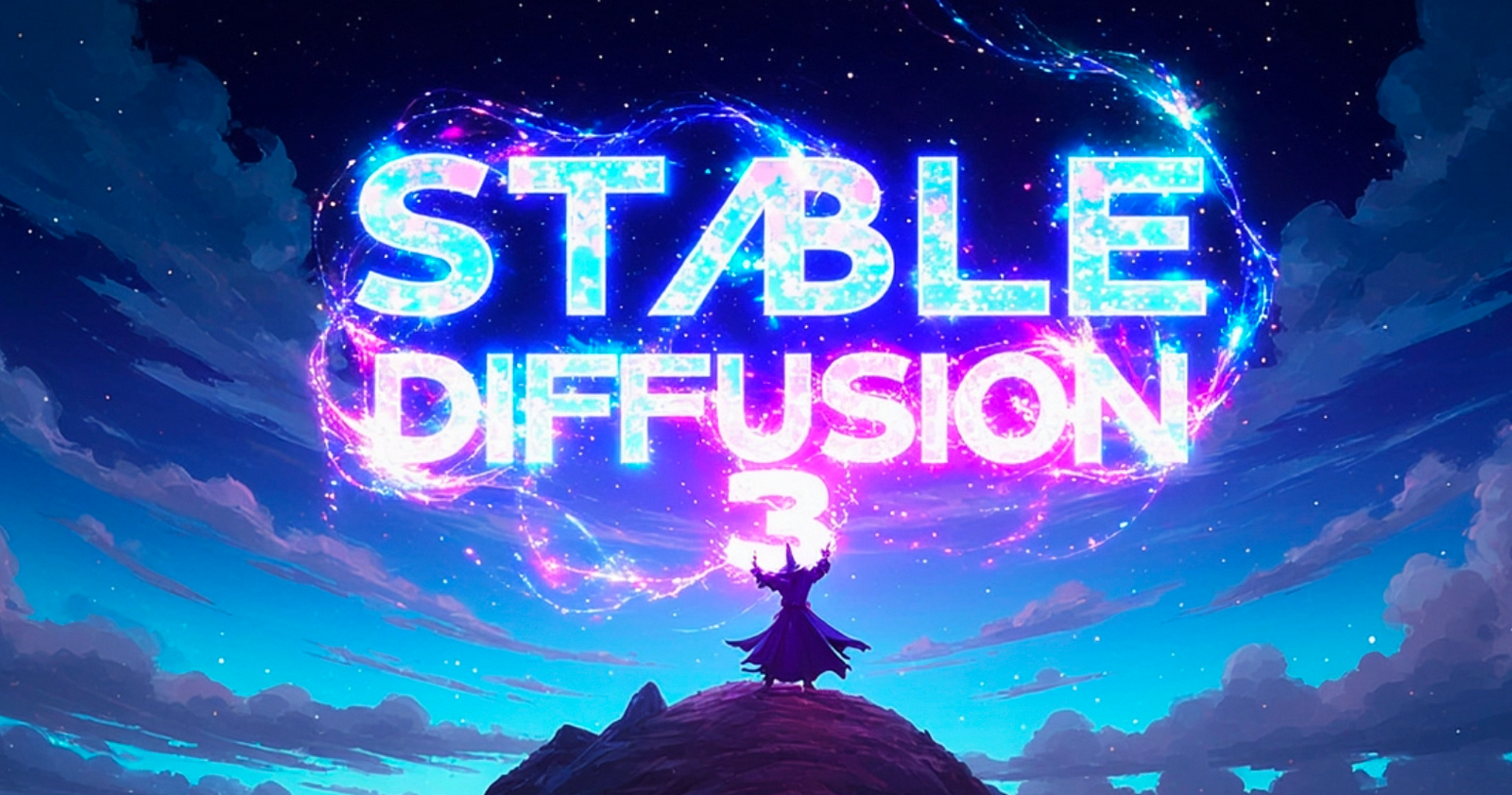
The Stable Diffusion 3 suite consists of models ranging from 800M to 8B parameters. This diverse range of models aligns with our commitment to democratizing access and offers users scalability and quality options to suit their creative requirements. Stable Diffusion 3 combines a diffusion transformer architecture with flow matching, enabling powerful and versatile generative capabilities.

The Evolution of Stable Diffusion Models
Since their inception, stable diffusion models have undergone significant evolution. Earlier models predominantly focused on anime images, utilizing Danbooru tags and waifu diffusion techniques to achieve stable synthesis. However, with advancements in research and technology, stable diffusion models have expanded their capabilities to encompass a wider range of image generation tasks. The integration of novel AI models, such as Anything V3, has further propelled the evolution of stable diffusion models, resulting in improved image quality and consistency.
The Need for Stable Diffusion Models in Various Fields
The need for stable diffusion models spans across various fields and industries, all of which require consistent and high-quality image generation. Stable diffusion models offer user interfaces that allow users to efficiently synthesize images with normal quality. This consistency is particularly valuable in fields such as design, entertainment, and advertising, where image quality and fidelity play a vital role. By leveraging stable diffusion models, users can generate images for a wide range of applications, including web interfaces, digital art, and computer graphics.
Diving Deeper into Anything V3
Now let’s take a closer look at Anything V3, one of the most popular stable diffusion models available. Anything V3 is built upon the foundation of stable diffusion, utilizing model weights to achieve high-quality image synthesis. Its stable diffusion web user interface (UI) provides users with a streamlined and user-friendly experience, making image generation an intuitive process. By embedding model weights and diffusion model checkpoints, Anything V3 ensures stable and consistent image generation, further solidifying its position as a top choice for stable diffusion models.
What is Anything V3?
Anything V3 is an artificial intelligence model designed for stable diffusion web UI, focusing on user interface consistency. By utilizing stable diffusion VAE (Variational Autoencoder) techniques, Anything V3 is capable of generating images with normal quality, free from artifacts and other distortions.
The model file of Anything V3 contains the necessary parameters and weights, allowing for efficient image generation. The integration of stable diffusion tutorial, embedding model weights, and diffusion model checkpoints ensures that Anything V3 consistently delivers high-quality images through its stable diffusion web interface.
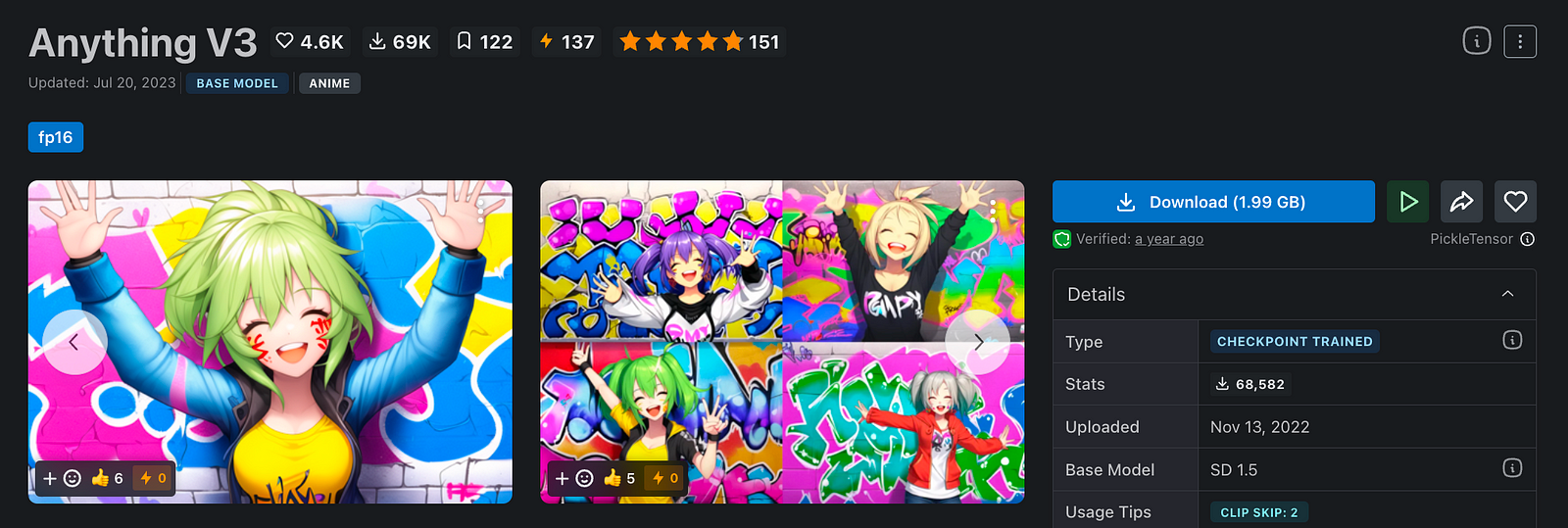
The Uniqueness of Anything V3
What sets Anything V3 apart from other stable diffusion models are its unique features. With a focus on stable diffusion web UI, Anything V3 offers users a seamless and user-friendly interface for image generation. Its neural network architecture, combined with stable diffusion techniques, enables the model to consistently generate images with normal quality, free from distortions and artifacts. By incorporating stable diffusion tutorial, model weights, and diffusion model checkpoints, Anything V3 ensures a streamlined approach to stable diffusion image generation, making it a standout choice for both beginners and experts alike.
# download model weight anything-v3-fp32-pruned.safetensors
%cd /content/drive/MyDrive
from google.colab import files
import os
# "anything-v3-full.safetensors"
# is the big model of anythingv3 but it is too big to run in colab
if not os.path.exists('AnythingV3.0/anything-v3-fp32-pruned.safetensors'):
!mkdir AnythingV3.0
%cd AnythingV3.0
print("downloading...")
!wget https://huggingface.co/Linaqruf/anything-v3.0/resolve/main/anything-v3-fp32-pruned.safetensors
print("copying file...")
!cp /content/drive/MyDrive/AnythingV3.0/anything-v3-fp32-pruned.safetensors /content/stable-diffusion-webui/models/Stable-diffusion/Comparing Anything V3 with Previous Versions
When comparing Anything V3 with its previous versions, we can see the evolution and improvements in stable diffusion models. While previous versions laid the foundation, Anything V3 has taken stable diffusion models to new heights by offering significant advancements and different results. Here are some key differences between Anything V3 and its predecessors:
- Improved image quality and fidelity
- More user-friendly stable diffusion web UI
- Enhanced stability and consistency in image synthesis
- Streamlined setup process with the help of embedding model weights and diffusion model checkpoints
- Increased control over image generation, resulting in more accurate outputs
Newer V5 versions can look at this:https://civitai.com/models/9409

Implementing Stable Diffusion Models
Implementing stable diffusion models can seem daunting, but with the right guidance, it becomes a manageable task. The implementation process involves setting up the stable diffusion model, embedding model weights, and configuring the user interface for image generation.
By following a step-by-step approach and using tools like Google Colab, users can easily implement stable diffusion models and leverage their capabilities for generating high-quality images. In the following sections, we will provide a comprehensive guide on implementing Anything V3 and address common challenges that may arise during the process.
Preparation Steps for Implementing Models
Before diving into the implementation of stable diffusion models, certain preparation steps need to be taken to ensure a smooth setup process. These steps include:
- Gathering the necessary dataset for training the stable diffusion model.
- Setting up the required software and libraries, such as Python and relevant AI frameworks.
- Configuring the training environment, including GPU setup for faster model training.
- Preparing the stable diffusion model file, which contains the model weights and diffusion model checkpoint.
- By carefully completing these preparation steps, users can lay the foundation for the successful implementation and utilization of stable diffusion models.
Step-by-step Guide for Implementing Anything V3
To help users effectively implement Anything V3, we have compiled a detailed step-by-step guide. Follow these instructions for a successful setup and utilization of Anything V3:
- Follow this tutorial: https://youtu.be/9318tatcUok . But replace the waifu diffusion model_link with “https://huggingface.co/Linaqruf/anything-v3.0/resolve/main/Anything-V3.0-pruned-fp16.ckpt”
- Install the necessary libraries and dependencies, including Python and AI frameworks.
- Go to https://huggingface.co/ and register for their site, then download Anything from https://huggingface.co/Linaqruf/anything-v3.0/resolve/main/Anything-V3.0-pruned-fp16.safetensors and place the file in your models folder, hereabouts: stable-diffusion-webui\models\Stable-diffusion
- Utilize Google Colab for a user-friendly implementation experience.
- Then just fire up the UI and select Anything v3 from the model dropdown. You’ll have to learn slightly different prompting to get good results, I’d suggest going here and looking at how their pictures are tagged, and using similar tags in your prompts. https://gelbooru.com/
- Experiment with different model parameters and settings to achieve desired image synthesis results.
- By following this comprehensive guide, users can confidently implement Anything V3 and harness its powerful stable diffusion capabilities.

Common Challenges in Implementing Models and How to Overcome Them
While implementing stable diffusion models, users may encounter certain challenges. However, with the right solutions, these challenges can be overcome. Here are some common challenges and their corresponding solutions:
- Limited computational resources: Use cloud-based GPU services or distributed training techniques to overcome resource limitations.
- Model instability: Adjust model hyperparameters, such as learning rate and model capacity, to achieve stability.
- Insufficient training data: Acquire additional training data or implement data augmentation techniques to enhance model performance.
- Overfitting: Implement regularization techniques, such as dropout or weight decay, to mitigate overfitting issues.
- Time-consuming training process: Utilize pre-trained models or consider model compression techniques to reduce training time.
- By employing these solutions, users can navigate through the challenges and achieve successful implementation of stable diffusion models.
Exploring Other Popular Stable Diffusion Models
While Anything V3 is a prominent stable diffusion model, there are other popular models worth exploring. These models have their own unique features and qualities that cater to different image generation needs. Let’s take a closer look at some of these popular stable diffusion models, their functionalities, and how they have contributed to the field of stable diffusion.
Overview of Popular Models
Among the popular stable diffusion models, many have focused specifically on generating anime-style images. These models, often referred to as anime models, utilize stable diffusion techniques to achieve high-quality image synthesis. One notable example is Dreambooth, a stable diffusion model that has gained significant traction in the anime community. Dreambooth’s ability to generate anime images with normal quality, free from distortions, has made it a popular choice among anime enthusiasts looking to create stunning artwork and visual content.
Check out Stable Diffusion Checkpoints for AI art for more details.
Anime style.
Realistic photo style.
2.5D Styles

Detailed Look at Notable Models
In addition to anime models, there are several other stable diffusion models that have made a notable impact in the field. For instance, SDXL, developed by NovelAI, offers advanced synthesis capabilities, allowing users to generate images with exceptional quality and fidelity. Its sophisticated neural network architecture, combined with stable diffusion techniques, results in stunning visual outputs. By exploring these notable models, users can discover a wide range of stable diffusion models that cater to different image generation needs and artistic styles.
Advanced Concepts in Stable Diffusion Models
Stable diffusion models offer not only the ability to generate high-quality images but also incorporate advanced concepts that enhance their capabilities. These concepts, such as merging two models, understanding model file formats, and differentiating pruned, full, and EMA-only models, contribute to the depth and versatility of stable diffusion models. By delving into these advanced concepts, users can further expand their understanding of stable diffusion models and unlock new possibilities for image generation.
Merging Two Models: Pros and Cons
Merging two stable diffusion models can offer unique advantages and disadvantages. By combining the strengths of different models, users can potentially achieve enhanced image synthesis results. However, this approach also comes with some drawbacks. Let’s explore the pros and cons of merging two stable diffusion models:
Pros:
- Increased diversity in image generation
- Potentially improved image quality and fidelity
- Opportunities for novel synthesis techniques
- Cons:
- Complexity in model training and setup
- Potential challenges in ensuring compatibility between models
- Increased computational requirements
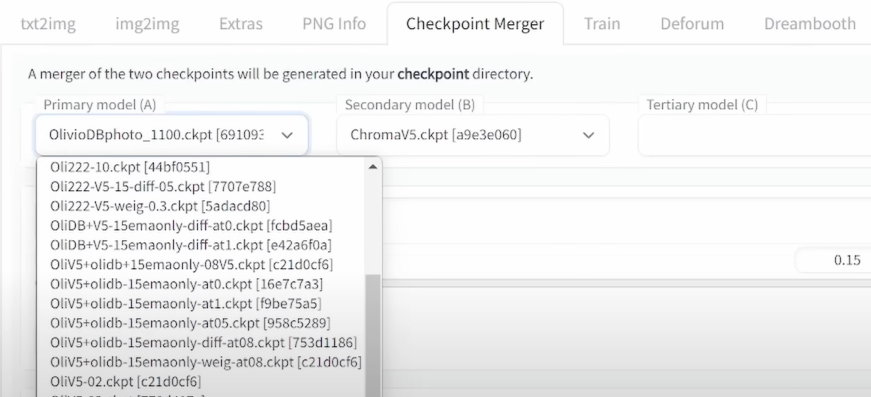
Understanding Model File Formats
Model file formats play a crucial role in stable diffusion models, as they contain the necessary information and parameters for image synthesis. Understanding different model file formats is essential for effectively utilizing stable diffusion models. These file formats often include checkpoint files, embedding techniques, and model weights. By familiarizing themselves with model file formats, users can better comprehend the inner workings of stable diffusion models and make sound decisions during model setup and implementation.
Decoding Pruned vs Full vs EMA-only Models
When working with stable diffusion models, it is important to differentiate between pruned, full, and EMA-only models. Each model type offers distinct capabilities and characteristics. Here is a breakdown of these model types:
- Pruned models: These models have undergone a pruning process, removing unnecessary parameters to enhance efficiency.
- Full models: Full models retain all parameters and offer the highest synthesis quality, but can be computationally expensive.
- EMA-only models: These models rely solely on exponential moving average (EMA) techniques, simplifying the synthesis process.
- Understanding the nuances of pruned, full, and EMA-only models enables users to select the model type that best suits their image generation needs and computational resources.
Future of Stable Diffusion Models
As stable diffusion models continue to evolve, it is important to consider the future trends that will shape their development. These trends will influence the capabilities and applications of stable diffusion models, leading to improved image synthesis and user experiences. Let’s take a look at some predicted trends in stable diffusion models and explore how advancements in the field could impact models like Anything V3.
Predicted Trends in Stable Diffusion Models
Stable diffusion models are expected to undergo further advancements in the coming years, driven by ongoing research and development. Here are some predicted trends in stable diffusion models:
- Handling complex data types: Stable diffusion models will evolve to handle more diverse and challenging data sets beyond images.
- Integration with web UI: Stable diffusion models may increasingly integrate with web user interfaces, providing more user-friendly interactions.
- Widening industry adoption: The use of stable diffusion models is expected to expand across different industries, such as healthcare, robotics, and entertainment.
- Enhanced synthesis accuracy: Advancements in stable diffusion models will result in even more accurate and realistic image synthesis.
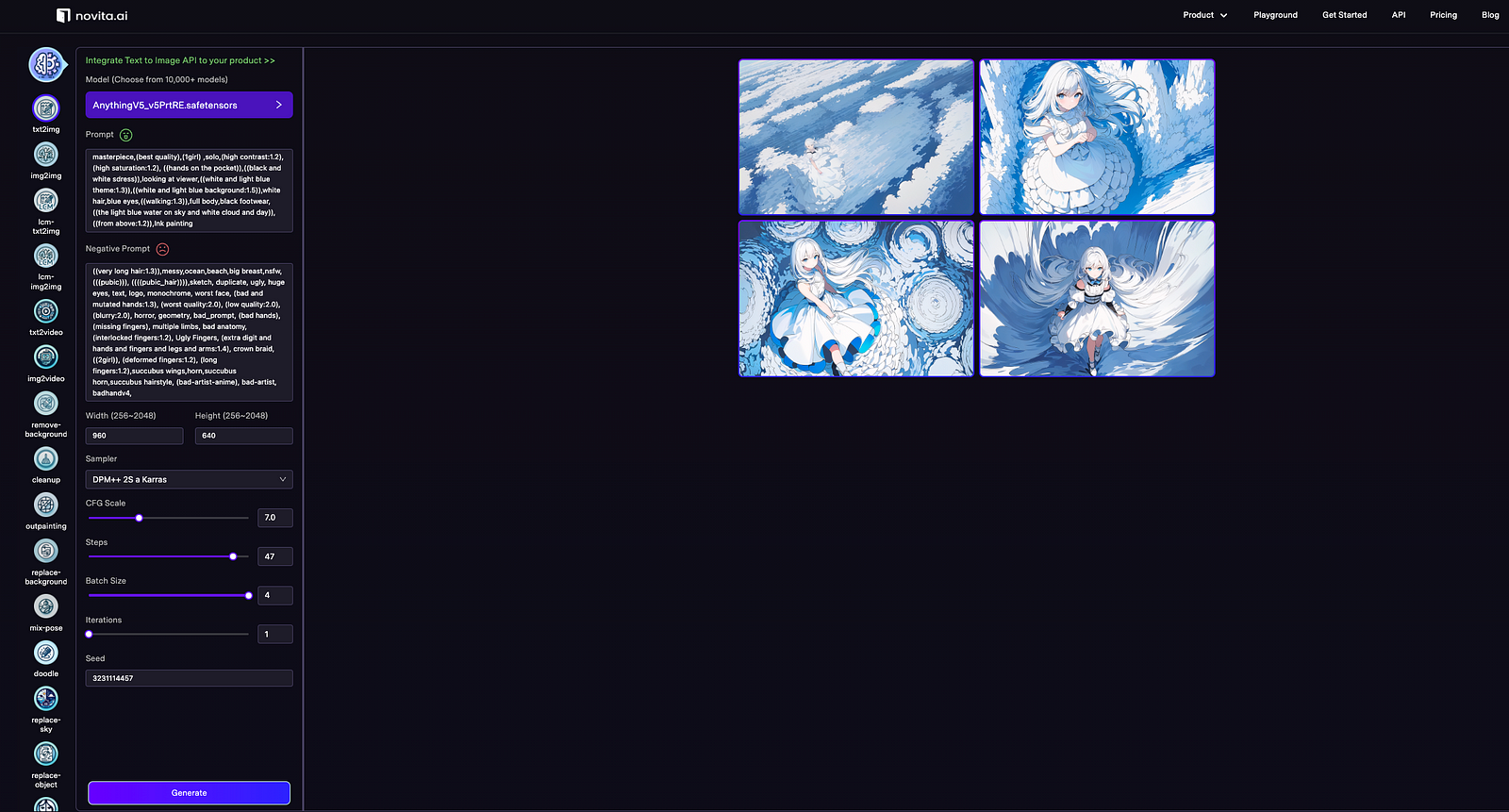
How Advancements Could Impact the Use of Models Like Anything V3
The potential advancements in stable diffusion models will greatly impact models like Anything V3. As technology progresses, Anything V3 and similar stable diffusion models can be expected to benefit from the following developments:
- Improved image generation quality: Advancements in stable diffusion models will lead to even higher image quality, offering more realistic and visually appealing results.
- Increased accessibility: Advancements may make stable diffusion models more accessible to a broader user base, enabling a wider range of creative applications.
- Faster generation speeds: Innovations in stable diffusion models may result in faster image generation, allowing for more efficient workflows.
- Expanded training data sets: Future developments could provide access to larger and more diverse training data sets, enhancing the quality and diversity of synthesized images.
- Enhanced user interface: Advancements may lead to user-friendly stable diffusion web UIs, simplifying the setup and control of stable diffusion models.

Essential Resources for Further Learning
To further expand your knowledge and understanding of stable diffusion models, it is essential to explore additional resources. These resources can provide valuable insights, tutorials, and updates on stable diffusion models, allowing you to stay informed and up to date with the latest developments.
Where to Find More Information on Stable Diffusion Models
For comprehensive information and resources on stable diffusion models, researchers and enthusiasts can turn to specialized AI forums, communities, and platforms. Here are some recommended sources for finding more information on stable diffusion models:
- AI forums and communities that focus on image synthesis and stable diffusion techniques.
- Dedicated web user interface (UI) platforms that offer synthesis consistency and tutorials for stable diffusion models.
- AI repositories hosting model checkpoints, embedding techniques, and setup tutorials for stable diffusion models.
- Online platforms like HuggingFace, provide a wide range of AI models, including stable diffusion models.
- Research papers and publications related to stable diffusion, image synthesis, and AI advancements.
- By exploring these resources, you can deepen your understanding of stable diffusion models and stay updated with the latest developments in the field.

How Can You Stay Updated with Developments in Stable Diffusion Models?
Keeping up with the latest developments in stable diffusion models is essential for staying at the forefront of this rapidly evolving field. Here are some strategies to stay informed and updated:
- Regularly check stable diffusion model repositories for new synthesis developments, model weights, and diffusion model updates.
- Follow stable diffusion web user interface (UI) platforms for announcements, tutorials, and new features.
- Attend AI conferences, webinars, and workshops focused on image synthesis and stable diffusion models.
- Engage with the stable diffusion model community on forums, blogs, and social media platforms.
- Collaborate with fellow researchers and practitioners to share knowledge and exchange ideas.
- By adopting these strategies, you can stay informed on the latest developments in stable diffusion models and continue to enhance your expertise in this exciting field.
Conclusion
In conclusion, stable diffusion models have revolutionized the way we approach various fields. They provide a deeper understanding, unique insights, and improved predictions. With the introduction of Anything V3, we have witnessed significant advancements and enhancements in stable diffusion models. The implementation process may have its challenges, but with proper preparation and guidance, they can be overcome. It is also important to explore other popular models and stay updated with the latest advancements in this field.
As we look toward the future, stable diffusion models are expected to continue evolving and shaping various industries. Advancements in technology and research will further enhance their capabilities and impact. For those interested in diving deeper into this subject, there are several essential resources available for further learning. Stay informed and explore the possibilities that stable diffusion models offer.
novita.ai provides Stable Diffusion API and hundreds of fast and cheapest AI image generation APIs for 10,000 models.🎯 Fastest generation in just 2s, Pay-As-You-Go, a minimum of $0.0015 for each standard image, you can add your own models and avoid GPU maintenance. Free to share open-source extensions.
Recommended Reading
